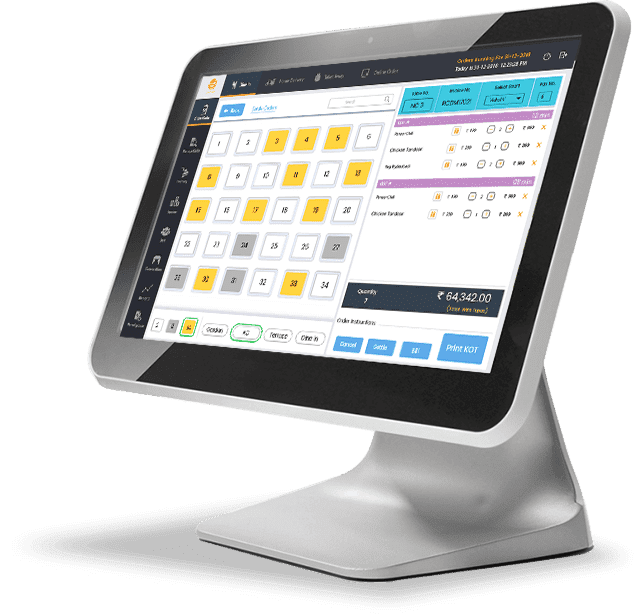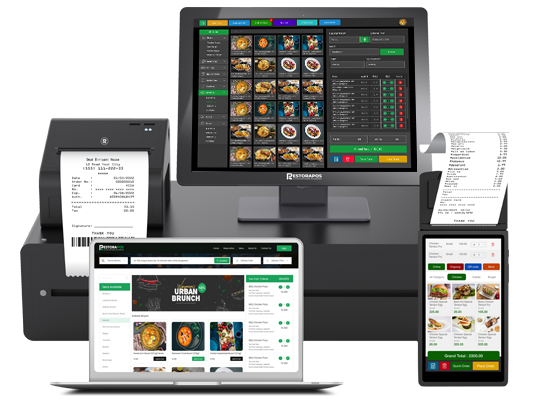Just How POS System Works: A Comprehensive Overview for Organization Owners
A POS system functions as a crucial tool for modern companies, incorporating various components to simplify operations. It includes hardware like barcode scanners and software application up for sale monitoring. This system not only refines deals but likewise takes care of inventory and examines customer habits. Recognizing its performance can substantially influence a business's effectiveness and decision-making. What are the crucial elements that contribute to this effectiveness? Discovering these parts provides beneficial understandings.
Comprehending the Components of a POS System
A Factor of Sale (POS) system is composed of several key elements that function together to help with transactions and take care of organization operations. At its core, the equipment includes gadgets such as a sales register, barcode scanner, receipt printer, and payment incurable, all necessary for refining sales (Restaurant POS Software). The software program element takes care of inventory, sales monitoring, and client data, providing useful insights for service decisions.Additionally, data sources store deal records and client information, making certain data stability and security. Network connection enables real-time updates and accessibility to cloud-based solutions, enhancing functional efficiency. Interface, created for simplicity of use, enable team to navigate the system swiftly, reducing training time. Together, these elements create a cohesive system that simplifies the sales process, boosts customer solution, and aids in effective management of company resources. Understanding these elements is crucial for company owner looking for to enhance their POS systems
Just How Sales Deals Are Processed
When a customer determines to make a purchase, the sales transaction starts a collection of methodical steps within the POS system. Initially, the cashier inputs the things being acquired, which are checked via a barcode visitor or by hand gotten in. This action recovers item information, including rates and appropriate tax obligations, from the system's database.Next, the client exists with the total amount due. The POS system then refines the settlement, whether through money, bank card, or mobile payment approaches. For digital settlements, the POS safely interacts with payment processors to accredit and confirm the transaction.Once the repayment is verified, the system creates a receipt, which can be printed or sent out digitally. This invoice functions as receipt for the consumer. Finally, the transaction information is tape-recorded in the system, ensuring exact sales records and monetary monitoring for the organization.
Stock Monitoring and Monitoring
Reliable stock monitoring and monitoring are essential elements of a POS system, as they assure that services maintain ideal stock degrees and reduce disparities. A robust POS system enables real-time stock updates, reflecting sales and returns immediately. This allows entrepreneur to check supply degrees precisely, guaranteeing that popular items are readily available while protecting against overstocking of less popular products.Additionally, progressed POS systems provide functions such as automated stock signals and reorder tips, streamlining the procurement procedure. Barcoding and RFID technology boost accuracy in tracking supply motion, reducing human mistake. Considerable reporting devices offer insights right into inventory turnover rates, helping services make informed decisions regarding acquiring and product offerings. Inevitably, efficient supply management through a POS system not just improves functional efficiency yet additionally enhances client complete satisfaction by ensuring item schedule.

Evaluating Consumer Data and Insights
Consumer information evaluation functions as an effective device for organizations using a POS system. By gathering and checking out transaction information, services can reveal valuable insights about client habits and choices. This analysis enables them to recognize acquiring patterns, peak purchasing times, and popular items, thus notifying stock choices and marketing strategies.Additionally, services can segment their client base, permitting individualized advertising and marketing efforts that deal with certain demographics or buying practices. Recognizing client loyalty patterns also helps my response in creating targeted promos and benefits programs.The information obtained from a POS system can also disclose insights right into client responses, making it possible for businesses to make enlightened choices regarding check out here item offerings and solution enhancements. Inevitably, leveraging customer information properly can improve the general buying experience, foster client contentment, and drive earnings growth.
Benefits of Executing a POS System
Applying a POS system supplies countless advantages that can significantly boost company procedures. To start with, it enhances deal procedures, minimizing wait times and boosting customer satisfaction. By automating sales procedures, organizations can lessen human error and warranty precise record-keeping. Furthermore, a POS system offers valuable data analytics, enabling owners to track sales patterns and stock levels in real-time. This understanding supports notified decision-making, assisting to maximize supply management and marketing strategies.Moreover, lots of POS systems incorporate with various other business tools, such as accounting software program, simplifying financial management. Enhanced staff member monitoring features, such as tracking hours and efficiency, more add to operational efficiency.Lastly, the implementation of a POS system can bring about increased income with boosted customer experiences and critical insights, ultimately fostering service development and sustainability.
Regularly Asked Inquiries
What Kinds Of Businesses Can Profit From a POS System?

Just how Much Does a POS System Normally Price?
The price of a POS system normally varies from a couple of hundred to a number of thousand bucks, depending on attributes, hardware, and software program - Restaurant POS Software. Services have to think about recurring costs for maintenance, assistance, and transaction handling when budgeting

Can I Integrate a POS System With Existing Software?
Incorporating a POS system with existing software is frequently viable. Numerous systems offer APIs or integrated compatibility attributes, permitting businesses to enhance operations and improve performance by linking different software program applications effectively.
What Training Is Required for Team to Make Use Of a POS System?
Training for personnel to utilize a POS system normally consists of understanding software program capabilities, refining transactions, taking care of stock, and taking care of consumer communications - Restaurant POS Software. Practical presentations and hands-on session enhance proficiency and confidence in operation the system effectively
What Takes place if the Web Goes Down While Utilizing a POS System?
If the net decreases during POS system use, deals might be interrupted. Many systems offer offline capabilities, enabling standard operations to proceed, however complete capability, consisting of real-time supply updates, will certainly be restricted.